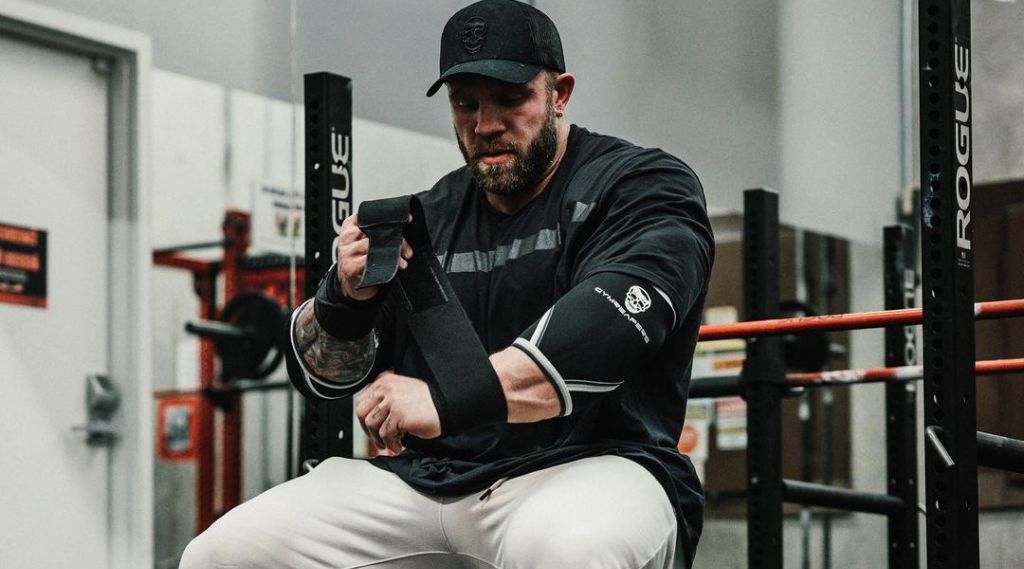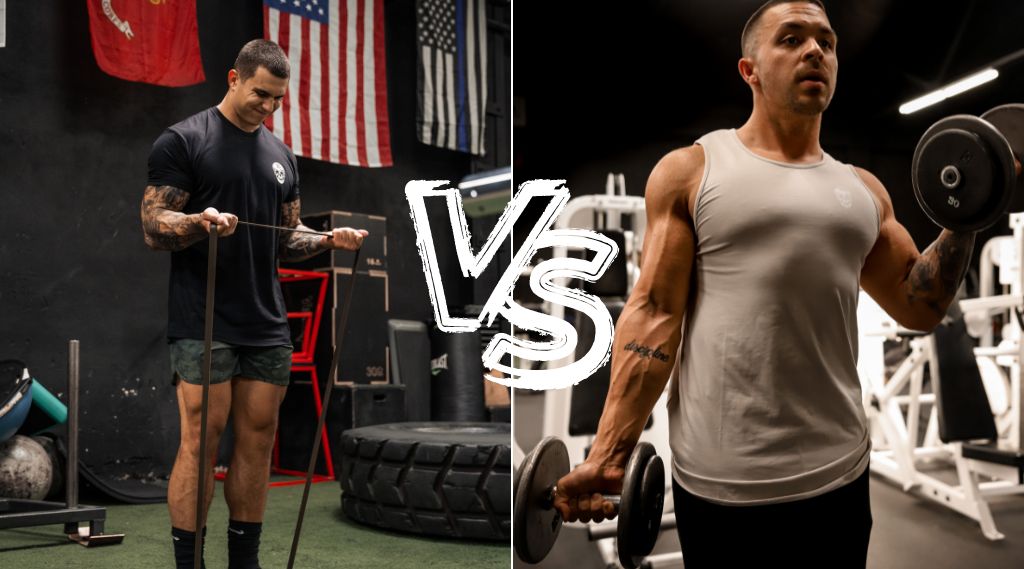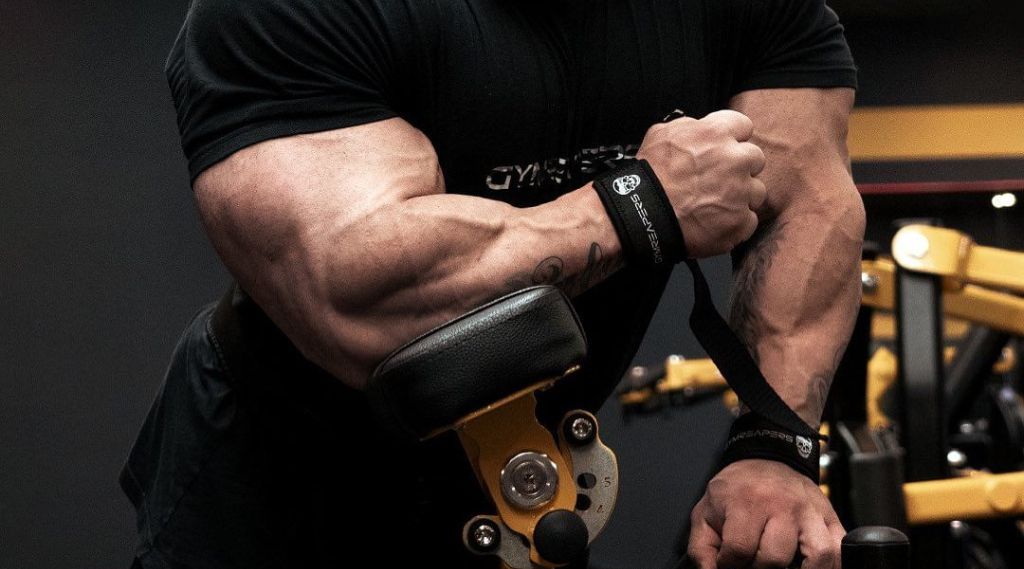As a powerlifting coach, I’m often asked whether wearing wrist wraps for bench press is worth it, how much they help, and how to wear them correctly.
Wrist wraps are helpful for anyone who wants to increase their potential to lift more weight, reduce their risk of injury, and improve their lifting technique. Wrist wraps can be worn for a variety of movements, but they are most commonly used during the bench press to support the wrists as they support the barbell.
That said, wrist wraps are only beneficial for the bench press if you’re wearing them properly and choosing the right wraps.
Key Takeaways
Wearing wrist wraps for bench press allows you to bench anywhere from 2-8% more weight.
A longer (36-inch), stiffer wrist wrap can be better for heavier and more advanced lifters, but most will do better with a shorter (12-24 inch) wrap that offers slightly more stretch.
The Gymreapers 18-inch wrist wrap is my top pick for bench pressing, especially for those competing in powerlifting.
Benefits of Wearing Wrist Wraps For Bench Press

The benefits of wrist wraps for bench press include:
Increased Potential To Lift Heavier Loads
Lifters can expect to bench press 2-8% more wearing wrist wraps than without.
The use of wrist wraps increases grip strength by compressing the muscles and tendons of the wrist and forearm that are responsible for grip strength.
This increase in grip strength can cause a significant increase in the amount of weight you’re able to bench press for a couple of reasons:
- It helps you stabilize the bar. Keeping the more under control can help you maintain a better bar path and allow you to press heavier loads.
- It causes the weight to feel lighter in your hands. This can increase your confidence under heavy loads allowing you to maintain better technique with a lower perceived effort.
- It delays fatigue for the forearm muscles. Allowing you to bench more weight and more total volume throughout a session to encourage more strength gain over time.
Pain Management
Lifters that struggle to increase their bench press due to wrist pain or discomfort can see the largest increases in how much they can bench while wearing wrist wraps.
As humans, we are programmed to avoid pain, so when we are in pain we can’t focus as well on the execution of our lifts.
Typically wrist pain/discomfort occurs because the wrist is being forced back into extension (bending backward) under load, which puts additional stress on the wrist joint. By using wrist wraps to support the wrists and keep them in a more neutral position, you can alleviate pain and discomfort.
Please note that when I say “pain”, I do not mean injury; when going for a max-effort bench press you will feel pressure in the joint but this pressure is not necessarily going to lead to injury and can be remedied using wrist wraps.
That said if you are feeling sharp pains and this pain continues when wearing wraps and after the session is over, then you are injured and you will need to consult with a physiotherapist for the best way to deal with the injury.
Technique
Weak forearm muscles can cause the bar to drift out of position, reducing your power output and limiting how much weight you’re able to bench press.
When bench pressing you want the bar moving in a relatively straight bar path, from your sternum (in the bottom position) to just over your shoulders (in the top position).
-
Note: There are nuances in the bench press bar path that some readers may argue about. I’m not going to discuss those nuances in this article.
If the bar starts to drift towards your face too early in the movement this will cause a loss of power (i.e. if right off your chest the bar travels back, not up).
This drifting is a result of a poor wrist position in many cases.
The bar rolls back into your hand and that momentum causes a loss of position where your wrist/hand bends backward. If your wrists get into this position, it will make pressing the barbell through the mid-range of motion a lot harder, especially if you’re going for a max lift.
Wearing wrist wraps casts your wrists into place and creates an extra layer of support that allows you to maintain a better bar path, resulting in more top-end strength (i.e. how much you can lift when you’re nearing your fatigue limit).
Who SHOULD Wear Wrist Wraps For Bench Press
Those who would benefit most from wrist wraps are:
- Anyone who experiences pain due to lack of joint stability: If you don’t have an injury, but are experiencing pain due to a lack of stability, then you should try wearing wrist wraps while benching, especially if you’re in a phase of training where you’re trying to lift heavier (lower reps, higher loads).
- Anyone that has a goal to increase their 1 rep max: Wrist wraps will help you maintain better wrist position and make the weight feel lighter in your hands, allowing you to press more weight.
- If you are planning to compete or already compete in powerlifting: Wrist wraps will help you lift maximal loads more often while encouraging better technique and reducing the risk of injury.
- Lifters looking to improve muscle growth: Wrist wraps can help delay fatigue which is helpful when you’re doing higher rep bench sets to try and grow your upper body.
Who SHOULD NOT Wear Wrist Wraps For Bench Press
Those who would not benefit from wrist wraps are:
Lifters who train for functional strength: The only real downside to wearing wrist wraps is your forearm extensor muscles get less work while you are benching. Those looking to gain functional strength may want to avoid using wrist wraps while benching and focus more on specific forearm strengthening exercises.
Those that want strong wrists and forearms: Those who are hoping to increase their wrist and forearm strength should avoid wearing wrist wraps for bench press. Better exercises than bench press exist for developing stronger wrists and forearms, but benching without wraps is another opportunity to develop strength.
Beginners: People that are new to lifting should focus on technique before worrying about wrist wraps. Learning the basics of bench pressing should be your top priority when you’re first starting out.
Wrist Wraps For Benching: 4 Tips For Wearing Them Correctly

Tip #1: Cover Your Entire Wrist Joint
When wrapping your wrists you want to make sure the joint is completely casted for maximum protection and support of the joint.
Start by looping your thumb through the thump loop or tightly gripping the top corner of the wrap in your palm.
From here start with 1-2 tight wraps around the bottom of the wrist joint to anchor your wraps and keep them from sliding down. From here start to wrap upwards to fully cover the joint and continue to wrap 6-8 tight wraps around your wrist until you can do up the velcro on your wrist wraps.
A common mistake many lifters make is wrapping their wrist underneath the wrist joint by not continuing to wrap upwards. When the wraps are underneath the joint, they don’t counteract the force placed on the wrist from the barbell, causing your wrists to bend backward.
Tip #2: Wrap Them Tightly
Wrap your wrist wraps tight enough that you can feel the wrap pull your hand closed.
Wrapping your wrist wraps tightly creates a stronger cast-like structure around your wrist for extra support.
This extra support will keep your wrist in position while performing your lift and help negate any wasted energy through unneeded wrist movement with bench pressing.
A quick test you can do to make sure your wraps are tight enough is to open your hand and then relax your hand. If your hand is pulled closed you have achieved a tight enough wrap.
Tip #3: Put Them On Right Before Your Set
If you are wearing your wraps tightly enough, timing when you wear your wrist wraps will make a huge difference. You will need to put them on right before your set to complete your set before losing feeling in your hands.
Wrap your wrists, chalk your hands(if needed), and go right to doing your set; this should take 30 seconds or less. If you have time to have a conversation before doing your set you don’t have your wraps tight enough.
Tip #4: Take Them Off Between Sets
Immediately after completing your set, take your wrist wraps off to allow blood to return to your hands.
Keeping your wrist wraps on too long can cause you to lose feeling in your hands and negatively affect your performance in later sets.
If you don't feel like you have to take your wraps off after your set you probably didn't wrap them tight enough.
Bench Press Wrist Wraps: Buyers Guide

Before buying your wrist wraps there are two factors to consider: length & stiffness.
Length
Most lifters would benefit from a shorter wrist wrap because they are easier to get a tighter wrap.
That said, if you are a more advanced lifter, you may prefer a 20-inch or 24-inch wrist wrap over 18-inches because the additional material provides more support for heavier loads.
To learn more about the differences between wrist wrap lengths, check out “How Long Should Wrist Wraps Be? 12 vs 18 vs 20 vs 24 Explained”.
Stiffness
There are two main levels of stiffness to pick from when choosing wrist wraps for bench press: flexible or stiff.
Flexible wraps can provide your wrist with more compression as they can be wrapped around your wrist for multiple revolutions to adjust the level of tightness. They also have more “give” that allows for some movement at the wrist.
Stiff wraps can provide your wrists with maximal support for the bench press by creating a cast-like effect that completely restricts movement at the wrist joint. They are more difficult to wrap around your wrists and do not conform to your wrists as flexible wraps do.
Most people would benefit from flexibility because of the ease of use. You can wrap them tighter with less effort.
However, stiffer wraps may be best for those who are lifting heavier loads because the stiffness of the material provides more support when you are strong enough to stiff wraps tightly.
To learn more about the differences between these types of wrist wraps, check out “Should Wrist Wraps Be Stiff Or Flexible?”.
Best Wrist Wrap Options For Bench Press
Gymreapers 18-Inch Wrist Wrap - Best Wrap For First Time Buyers And Most Lifters

The 18-inch wrist wraps are flexible and great for lifters looking to buy their first wrist wrap or lifters that want to compete and don’t want stiffer or longer wraps. They are approved for powerlifting meets in every federation.
Gymreapers 18-Inch Stiff Wrist Wraps

The heavy-duty wrist supports provide the needed support for lifters bench pressing more than 400 lbs or have already tried the more traditional wrist wraps and feel like they need a bit more support.
Frequently Asked Questions
Should I Use Wrist Wraps For Bench Press?
Yes, you should use wrist wraps for bench press. They will improve your ability to lift more weight, maintain better technique, and reduce the risk of wrist injury while benching.
At What Weight Should I Use Wrist Wraps For Bench?
You can start wearing wrist wraps at any weight. Most lifters find that when they start benching around 200 lbs that wrist wraps can make a significant difference in comfort. If you are a smaller lifter (less than 140 lbs) or female you may find the benefits closer to 100 lbs.
Can You Lift Heavier With Wrist Wraps?
Yes, you can lift heavier with wrist wraps. Wrist wraps provide the needed support to allow you to bench 2-8% more weight through pain management and improved technique.
Do Wrist Wraps Help Weak Wrists?
Wrist wraps do help weak wrists by creating a cast-like structure around the joint to provide extra support for any movements like bench press or shoulder press that puts pressure on the joint.













Leave a comment
All comments are moderated before being published.
This site is protected by hCaptcha and the hCaptcha Privacy Policy and Terms of Service apply.